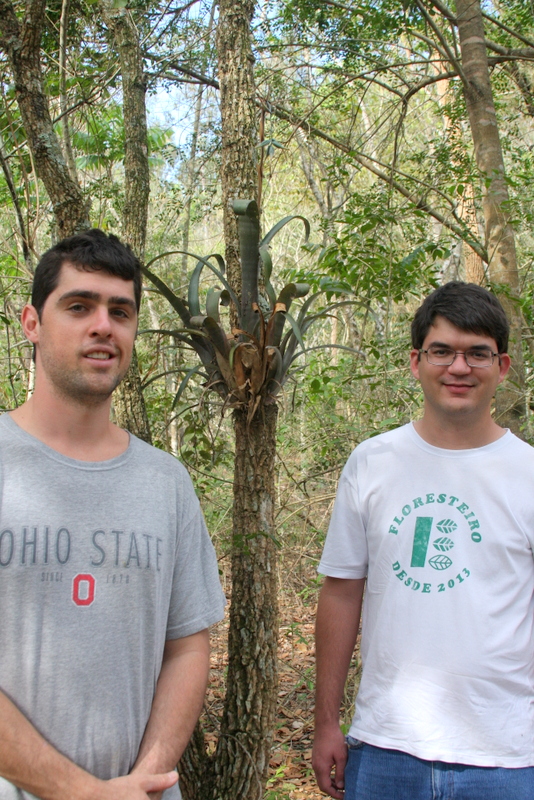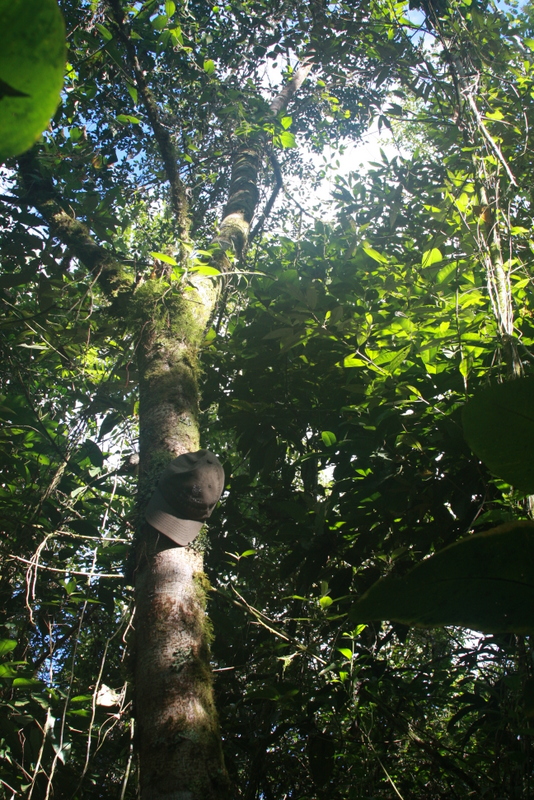Estefania Fernandez is a Bascom Fellow who recently finished her master’s thesis at the University of Montpelier, France. Last year, Estefania wrote about her preliminary results on tropical forest restoration and vascular epiphyte reintroductions in Costa Rica. Here, she describes the final results, recently published in Restoration Ecology.
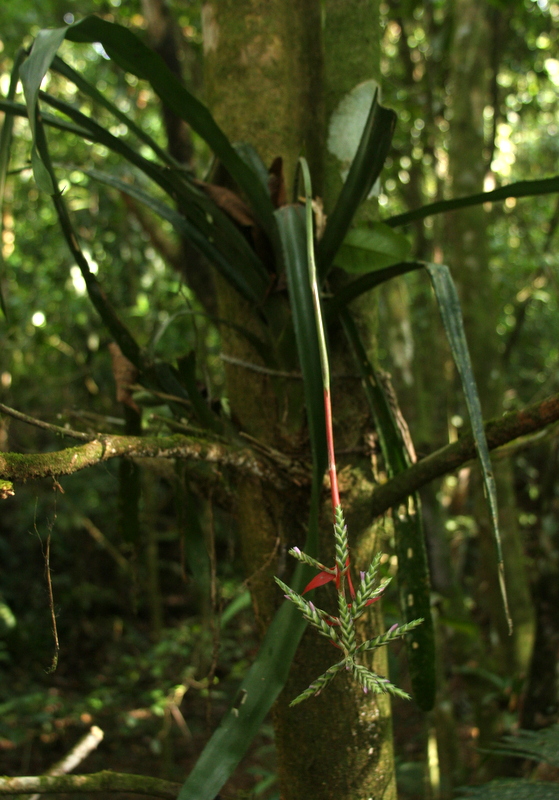
A transplanted bromeliad, Aechmea dactylina flowering in a 10-year old tree plantation.
Vascular epiphytes are plants that germinate and root on other plants without taking their nourishment from their host plant, and they represent 50% of the flora in some tropical forests and 9% of all vascular plants worldwide. If you are a plant lover, then you most likely have one or several vascular epiphytes in your house. Some of the most appreciated horticultural families include orchids (Orchidaceae), aroids (Araceae), and bromeliads (Bromeliaceae).
Vascular epiphytes also play key roles in our ecosystems. They are crucial to forest water and mineral recycling as they intercept rainfall and prevent rapid run-off and nutrient leaching. Vascular epiphytes are also exceptional microhabitats where invertebrate communities find refugia and birds and arboreal mammals forage.
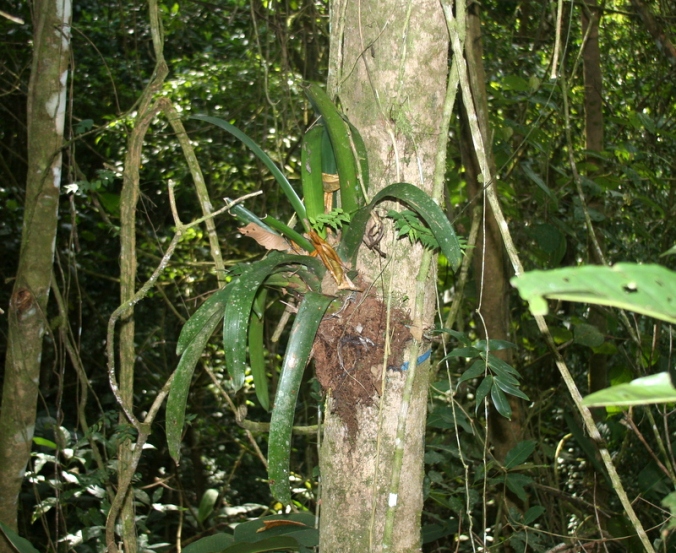
Transplanted individual of Werauhia gladioliflora
Despite their importance in forest ecosystems, vascular epiphytes are rarely taken into account in forest restoration. This is problematic because vascular epiphytes are often among the slowest plants to recolonize regenerating forests.
In 2015-2016, I tested whether transplanting epiphytes into young restoration sites could be a viable strategy to accelerate their reestablishment. I used a bromeliad for my experiment, Werauhia gladioliflora (H. Wendl.) J.R. Grant, which was common in remnant forest but had not been found during epiphyte surveys in nearby restoration areas. In March-June 2015, I transplanted 60 bromeliads into three restoration plantations near Las Cruces Biological Station in southern Costa Rica. I revisited the sites in January-February 2016, nine months after transplantation, to monitor survival and arthropod recolonization.
Happily, over 75% bromeliads survived and the number of arthropods on branches with bromeliads was seven times greater than in branches without bromeliads. Additionally, I observed that bromeliads buffered the local microclimate; during the driest and hottest times of the day, the interior of the bromeliads was moister and cooler than ambient air.

Transplanted individuals of Werauhia gladioliflora (left) hosted considerably more arthropods in their rosettes than could be found on the stems of trees that had not received a transplant. GN, JG, and MM are three study sites near Las Cruces Biological Station in southern Costa Rica. Photo by Dave Janas.
Restoring arboreal refugia
My research suggests that transplanting fallen epiphytes onto trees in restored sites contributes to the recovery of vascular epiphyte diversity in these ecosystems and has the additional benefits of bringing back arthropod diversity to these sites. Epiphytes, and specifically “tank” epiphytes that retain water in their rosettes, help stabilize microclimatic conditions, a critical function in light of climate change, which may put arboreal communities at special risk. Indeed, the body temperature of many animals such as invertebrates entirely depends on ambient temperatures but rising temperatures could push arboreal animal communities to the ground. Epiphytes offer ideal refugia from high temperatures and drought and their presence in tree canopies and understory is critical to preserve arboreal animal communities. Transplanting other epiphyte families or even entire epiphyte communities found on fallen branches could be tested in the future to broaden this strategy.
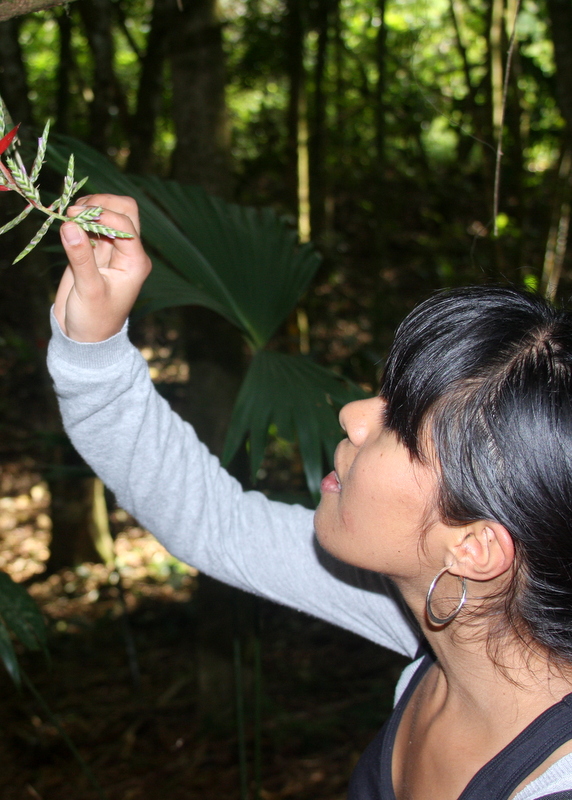
Estefania inspects a flowering individual of an Aechmea dactylina transplant




